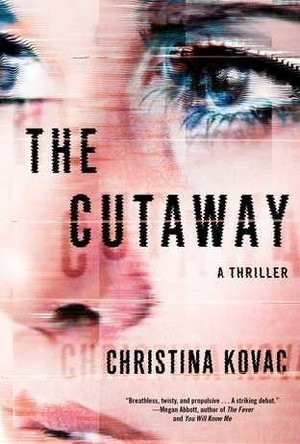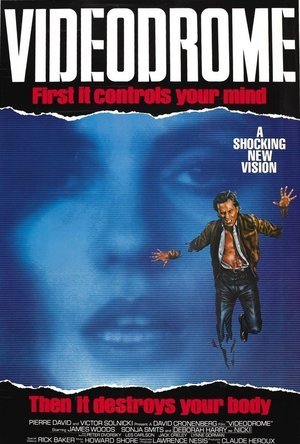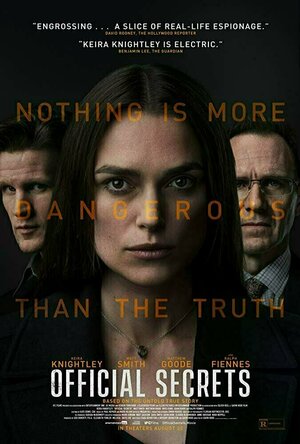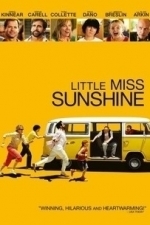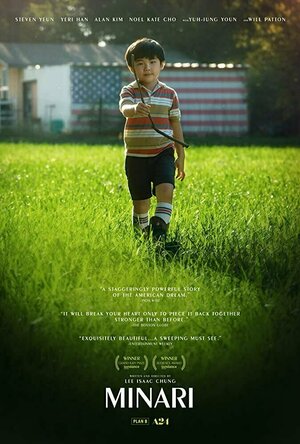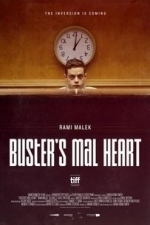Search
Search results
Becca Major (96 KP) rated The Irregular at Magic High School: Vol. 1: Enrollment Arc, Part 1 in Books
Feb 5, 2018
Interesting premise (3 more)
Tatsuya
Mystery surrounding the Shiba siblings
Most of the side-characters
Information dumps (3 more)
General editing mistakes
Miyuki
Lack of male characters (that aren’t antagonists)
The Setup
The Irregular at Magic High School
Book by Tsutomu Sato
Review by Rip Major
The Irregular at Magic High School is about siblings Tatsuya and Miyuki and their experiences at First High. The school is split into two main groups, the Blooms, who are gifted with the ability to use and control magic, and Weeds, who can use magic, but aren’t as strong with it as the Blooms are. Miyuki, who is a prodigy with magic and has the brains to back it up, is placed with the Blooms. Tatsuya, on the other hand, is not as gifted with magic, so he is placed with the Weeds.
The plot is pretty anime-standard. Boy and girl go to a new school and participate in shenanigans. The majority of the book follows the day to day misadventures of Tatsuya and Miyuki as they deal with the fact that, while they are extremely close, they are essentially in different hierarchical classes. This culminates in Miyuki joining the Student Council and Tatsuya joining the Disciplinary Committee, even though both are reluctant about the whole thing.
Tatsuya is a very interesting character because he is constantly annoyed by his classmates and their shenanigans, most of which he gets drawn into. He seems like the type of character that would prefer to be in the background and be left to his own devices, but his status as main character simply won’t let him. It is actually quite amusing to read his inner monologue while things happen to and around him. He is actually quite smart, being able to work on CADs (the in-universe way to cast magic) with exceptional skill and speed. He is also a skilled martial artist, apparently knowing ninjutsu, or something similar. Additionally, he also has a very mechanical way of thinking, which includes shutting down parts of himself that would ordinarily be considered normal. For instance, there is a scene where he realizes his older classmate is arousing him, and he shuts it down. Basically, in a book where the POV changes often and usually without meaning, Tatsuya is a very interesting character to be in the head of.
Unfortunately, Miyuki isn’t nearly as interesting as her brother. She is beautiful, smart, and gifted; all of which makes her a little too perfect for me to really connect with. Her major flaw is that she has an unusual and uncomfortable obsession with her brother. Also, she just feels a lot flatter than most of the side characters. And I officially have nothing else to say about her.
In all honesty, most of what I found interesting about this book was certain aspects of Sato’s world-building, specifically the pseudo-science/magic marriage and how it is explained. I also like how mysterious the history of the siblings is. Very little about their relationships with their parents is revealed, or why they are living alone in their apartment. In fact, other than the basic setup of the plot and characteristics of the two, not much else is explored in this book. I am curious to see if the next book will reveal more.
Book by Tsutomu Sato
Review by Rip Major
The Irregular at Magic High School is about siblings Tatsuya and Miyuki and their experiences at First High. The school is split into two main groups, the Blooms, who are gifted with the ability to use and control magic, and Weeds, who can use magic, but aren’t as strong with it as the Blooms are. Miyuki, who is a prodigy with magic and has the brains to back it up, is placed with the Blooms. Tatsuya, on the other hand, is not as gifted with magic, so he is placed with the Weeds.
The plot is pretty anime-standard. Boy and girl go to a new school and participate in shenanigans. The majority of the book follows the day to day misadventures of Tatsuya and Miyuki as they deal with the fact that, while they are extremely close, they are essentially in different hierarchical classes. This culminates in Miyuki joining the Student Council and Tatsuya joining the Disciplinary Committee, even though both are reluctant about the whole thing.
Tatsuya is a very interesting character because he is constantly annoyed by his classmates and their shenanigans, most of which he gets drawn into. He seems like the type of character that would prefer to be in the background and be left to his own devices, but his status as main character simply won’t let him. It is actually quite amusing to read his inner monologue while things happen to and around him. He is actually quite smart, being able to work on CADs (the in-universe way to cast magic) with exceptional skill and speed. He is also a skilled martial artist, apparently knowing ninjutsu, or something similar. Additionally, he also has a very mechanical way of thinking, which includes shutting down parts of himself that would ordinarily be considered normal. For instance, there is a scene where he realizes his older classmate is arousing him, and he shuts it down. Basically, in a book where the POV changes often and usually without meaning, Tatsuya is a very interesting character to be in the head of.
Unfortunately, Miyuki isn’t nearly as interesting as her brother. She is beautiful, smart, and gifted; all of which makes her a little too perfect for me to really connect with. Her major flaw is that she has an unusual and uncomfortable obsession with her brother. Also, she just feels a lot flatter than most of the side characters. And I officially have nothing else to say about her.
In all honesty, most of what I found interesting about this book was certain aspects of Sato’s world-building, specifically the pseudo-science/magic marriage and how it is explained. I also like how mysterious the history of the siblings is. Very little about their relationships with their parents is revealed, or why they are living alone in their apartment. In fact, other than the basic setup of the plot and characteristics of the two, not much else is explored in this book. I am curious to see if the next book will reveal more.
Kristy H (1252 KP) rated The Cutaway in Books
Feb 13, 2018
Virginia Knightly is a busy TV news producer. She's constantly juggling a million stories, cultivating her on-air talent, and appeasing whatever news director has been currently assigned to "revamp" her station and raise ratings. It's a typical day for Virginia when she sees a flyer come across her desk for a missing woman. But something in the woman's eyes in the fuzzy black and white poster haunt Virginia, and she becomes oddly attached to the case of Evelyn "Evie" Carney, a young, married lawyer who disappeared after dining with her husband (and informing him she wanted a divorce). It seems as if the DC police are more involved in Evie's case than Virginia would expect: perhaps even the Department of Justice. What happened to Evie, and is Virginia safe looking into her disappearance?
This seems to be yet another novel where I'm a bit of the minority here, but I just could not get into this one. The premise seemed intriguing (and of course, it was compared to all the popular thrillers du jour, which really doesn't do books favors these days). At times, I almost gave up on this book, which is not like me. First of all, instead of just focusing on the plot of Evie's disappearance, there is a ton (I mean a ton) of time focused on the in-fighting and arguing at the news station, which majorly detracts from the actual mystery plot. I found it juvenile and irritating. Because of this, quickly, I didn't like or care for any of the characters or their relationships whatsoever. Unfortunately, that never really changed. So much seemed to be going on in the book (including Virginia's own personal relationships: with the lead cop investigating Evie's case, her father, the main talent at the station) but so little of it related to Evelyn and her disappearance. A lot of loose ends never seemed to be tied up. I often found myself cringing at the dialogue.
It's sad, because, at times, the actual plot relating to Evelyn is good. I continually found myself wishing there was more of it. There's also a lot of telling versus showing, but I did find myself getting into the various pieces related to Evie. (It certainly makes you hope nothing bad ever happens to you, between the issues at the police department and various levels of justice.) I enjoyed that the story was set in a familiar location for me (Washington, DC). I did guess many of the main plot points, which was a little disappointing, including something you could see coming from the beginning of the story. The whole thing is so convoluted, with so many personal entanglements thrown in, that it's hard to believe at times. Virginia's obsession over Evie's disappearance is strange, and although a rather unbelievable reason will be given near the end, you spend the entire wondering why she's so fanatical. Apparently, while working in news, Kovac covered the Chandra Levy story, and you can see that in this tale at times. This is definitely a first novel, and there are glimmers of hopes for a second. Unfortunately, this one just wasn't for me.
I received a copy of this novel from the publisher and Netgalley (thank you!) in return for an unbiased review; it is available everywhere as of 03/21/2017.
<center><a href="http://justacatandabookatherside.blogspot.com/">Blog</a>; ~ <a href="https://twitter.com/mwcmoto">Twitter</a>; ~ <a href="https://www.facebook.com/justacatandabook/">Facebook</a>; ~ <a href="https://plus.google.com/u/0/+KristyHamiltonbooks">Google+</a></center>;
This seems to be yet another novel where I'm a bit of the minority here, but I just could not get into this one. The premise seemed intriguing (and of course, it was compared to all the popular thrillers du jour, which really doesn't do books favors these days). At times, I almost gave up on this book, which is not like me. First of all, instead of just focusing on the plot of Evie's disappearance, there is a ton (I mean a ton) of time focused on the in-fighting and arguing at the news station, which majorly detracts from the actual mystery plot. I found it juvenile and irritating. Because of this, quickly, I didn't like or care for any of the characters or their relationships whatsoever. Unfortunately, that never really changed. So much seemed to be going on in the book (including Virginia's own personal relationships: with the lead cop investigating Evie's case, her father, the main talent at the station) but so little of it related to Evelyn and her disappearance. A lot of loose ends never seemed to be tied up. I often found myself cringing at the dialogue.
It's sad, because, at times, the actual plot relating to Evelyn is good. I continually found myself wishing there was more of it. There's also a lot of telling versus showing, but I did find myself getting into the various pieces related to Evie. (It certainly makes you hope nothing bad ever happens to you, between the issues at the police department and various levels of justice.) I enjoyed that the story was set in a familiar location for me (Washington, DC). I did guess many of the main plot points, which was a little disappointing, including something you could see coming from the beginning of the story. The whole thing is so convoluted, with so many personal entanglements thrown in, that it's hard to believe at times. Virginia's obsession over Evie's disappearance is strange, and although a rather unbelievable reason will be given near the end, you spend the entire wondering why she's so fanatical. Apparently, while working in news, Kovac covered the Chandra Levy story, and you can see that in this tale at times. This is definitely a first novel, and there are glimmers of hopes for a second. Unfortunately, this one just wasn't for me.
I received a copy of this novel from the publisher and Netgalley (thank you!) in return for an unbiased review; it is available everywhere as of 03/21/2017.
<center><a href="http://justacatandabookatherside.blogspot.com/">Blog</a>; ~ <a href="https://twitter.com/mwcmoto">Twitter</a>; ~ <a href="https://www.facebook.com/justacatandabook/">Facebook</a>; ~ <a href="https://plus.google.com/u/0/+KristyHamiltonbooks">Google+</a></center>;
BookwormMama14 (18 KP) rated Can't Help Falling in Books
Jan 2, 2019
There are a few books that I have read this year that are beyond outstanding. Can't Help Falling is one such book. I can not emphasize enough how unique and brilliant Kara Isaac's books are. I was thrilled to see some of my favorite (and not so favorite) characters from Close to You make a reappearance. I adore the people in Kara's books! So much so, that I am utterly convinced they are real. Don't bother trying to change my mind because it won't work. I also really want a Narnia themed party for Christmas now.
I like to think that Peter sounds a little bit like Benedict Cumberbatch...that voice! Peter is such a big teddy bear, but I would want him on my side in a fight. Despite his doubts, he is such a wonderful man. Someone who is fiercely loyal, a true man of faith, and kind. He is human though and has his shortcomings, just like the rest of us. I adore Emelia, between her personality, meticulous party planning abilities, and Narnia obsession I just want to track her down and be her best friend. The web of connections and past events kept me on my toes and guessing up until the final chapters. This book is also the cause of a few very late nights reading. I was so completely immersed into the story. Even now I find myself grinning at the beautiful flow of the story and romance.
Don't let the cute antics and adorable features of our characters fool you, they still have quite the journey of healing, forgiveness, and second chances. Emelia and Peter are both dragging around loads of guilt and fear of the past. While they continue to struggle for atonement. However, no matter how hard they strive, they cannot find freedom on their own. Despite their best efforts, Emelia and Peter can not find peace. She can not forgive herself, she can not let go of her past mistakes, and neither can he. Instead, Emelia works to make up for what she has done, hides in wardrobes looking for Narnia and tries to shield her heart from the Heavenly Father whom she cannot see as loving. Will she be able to finally find peace? Or will she continue to run? Something that really stood out to me in this book was the message of second chances. Not only for others, but for ourselves. When we do not see ourselves as God sees us, when we see ourselves as broken and soiled, we don't think we deserve a second chance. But He can make us whole and pure. Forgiven and radiant. Will we allow ourselves the freedom of forgiveness and a second chance? And will you choose to be a Susan...or a Lucy?
Picking my top favorite books for the year will be challenging, but both of Kara's books are definitely among my absolute favorites! While these books can stand alone, I recommend reading Close to You first. Otherwise, there will be some confusion with the secondary storyline. Now if you'll excuse me, I have a wardrobe to find.
I received a free copy of Can't Help Falling through NetGalley in exchange for my honest review. All opinions expressed are mine alone.
I like to think that Peter sounds a little bit like Benedict Cumberbatch...that voice! Peter is such a big teddy bear, but I would want him on my side in a fight. Despite his doubts, he is such a wonderful man. Someone who is fiercely loyal, a true man of faith, and kind. He is human though and has his shortcomings, just like the rest of us. I adore Emelia, between her personality, meticulous party planning abilities, and Narnia obsession I just want to track her down and be her best friend. The web of connections and past events kept me on my toes and guessing up until the final chapters. This book is also the cause of a few very late nights reading. I was so completely immersed into the story. Even now I find myself grinning at the beautiful flow of the story and romance.
Don't let the cute antics and adorable features of our characters fool you, they still have quite the journey of healing, forgiveness, and second chances. Emelia and Peter are both dragging around loads of guilt and fear of the past. While they continue to struggle for atonement. However, no matter how hard they strive, they cannot find freedom on their own. Despite their best efforts, Emelia and Peter can not find peace. She can not forgive herself, she can not let go of her past mistakes, and neither can he. Instead, Emelia works to make up for what she has done, hides in wardrobes looking for Narnia and tries to shield her heart from the Heavenly Father whom she cannot see as loving. Will she be able to finally find peace? Or will she continue to run? Something that really stood out to me in this book was the message of second chances. Not only for others, but for ourselves. When we do not see ourselves as God sees us, when we see ourselves as broken and soiled, we don't think we deserve a second chance. But He can make us whole and pure. Forgiven and radiant. Will we allow ourselves the freedom of forgiveness and a second chance? And will you choose to be a Susan...or a Lucy?
Picking my top favorite books for the year will be challenging, but both of Kara's books are definitely among my absolute favorites! While these books can stand alone, I recommend reading Close to You first. Otherwise, there will be some confusion with the secondary storyline. Now if you'll excuse me, I have a wardrobe to find.
I received a free copy of Can't Help Falling through NetGalley in exchange for my honest review. All opinions expressed are mine alone.
Chris Sawin (602 KP) rated Videodrome (1983) in Movies
Jun 22, 2019
Max Renn is the president of Civic TV channel 83, a channel known for showcasing the most erotic and violent programming that anyone has ever come across. As you can imagine, the channel has a specific audience and Max takes it upon himself to find the next big thing for the network. Everything he comes across is too tame until Max gets ahold of Harlan. Harlan is an employee who specializes in pirate video broadcasts. It's through Harlan that Max is first exposed to Videodrome, an hour program that centralizes on torture and murder. Max becomes obsessed with Videodrome and realizes it may be the next step for channel 83. He does everything within his power to find out more about Videodrome ranging from where it's originally broadcast to tracking down the original supplier and even watching countless hours of bootleg videotapes. In addition to his obsession, Max begins hallucinating. Through his investigations, he finds out Videodrome transmissions cause tumors in the brain of whoever is able to actually watch it and therefore alter reality through hallucination. As Max begins to lose touch with reality, the people behind Videodrome have bigger plans for Max. Much bigger.
Videodrome is an interesting sci-fi horror film. It's the type of film that gets better with each viewing. It's also got some pretty amazing make-up effects by the incredible Rick Baker (An American Werewolf in London, The Frighteners). So while the film does show its age at times (mainly during the segment where Max is having his hallucination recorded by Spectacular Optacle owner, Barry Convex), the majority of the special effects hold up incredibly well after 26 years. It also boasts one of the most original and intriguing death scenes (Barry Convex's) of any horror film.
The David Cronenberg helmed psycological thriller is more than just great special effects. In all honesty, it's spectacularly odd. The hallucinations alone will leave some viewers scratching their heads, but there is a clever and intelligent story beneath all the weirdness. The story focuses on TV, which is a source of entertainment that everyone relies on and it takes aim at sex and violence. The two themes people are attracted to the most, but the consequences the film comes up with for watching a program that uses these themes to the extreme is truly one of its defining moments. So while whipping a TV set may seem like an illogical idea to most, Videodrome's superb writing makes it seem almost logical. The fact that the film concentrates on something like television that everyone can relate to while creating an intelligent reasoning for it makes the entire experience more believable.
Videodrome is a cult classic for a good reason. While it may seem odd at first, it's actually an intelligent and well-made sci-fi horror film. That old layer of skin may look and feel like a film that is too weird for most audiences that's outdated and doesn't make any sense, but beneath that old flesh is the new flesh. In this case, the new flesh is actually a superb film with a quick witted script, a terrific story, special effects that hold up to this day, and just a worthwhile experience overall. It's a cult classic that's worthy of being added to any horror or sci-fi fan's collection. Long live the new flesh.
Videodrome is an interesting sci-fi horror film. It's the type of film that gets better with each viewing. It's also got some pretty amazing make-up effects by the incredible Rick Baker (An American Werewolf in London, The Frighteners). So while the film does show its age at times (mainly during the segment where Max is having his hallucination recorded by Spectacular Optacle owner, Barry Convex), the majority of the special effects hold up incredibly well after 26 years. It also boasts one of the most original and intriguing death scenes (Barry Convex's) of any horror film.
The David Cronenberg helmed psycological thriller is more than just great special effects. In all honesty, it's spectacularly odd. The hallucinations alone will leave some viewers scratching their heads, but there is a clever and intelligent story beneath all the weirdness. The story focuses on TV, which is a source of entertainment that everyone relies on and it takes aim at sex and violence. The two themes people are attracted to the most, but the consequences the film comes up with for watching a program that uses these themes to the extreme is truly one of its defining moments. So while whipping a TV set may seem like an illogical idea to most, Videodrome's superb writing makes it seem almost logical. The fact that the film concentrates on something like television that everyone can relate to while creating an intelligent reasoning for it makes the entire experience more believable.
Videodrome is a cult classic for a good reason. While it may seem odd at first, it's actually an intelligent and well-made sci-fi horror film. That old layer of skin may look and feel like a film that is too weird for most audiences that's outdated and doesn't make any sense, but beneath that old flesh is the new flesh. In this case, the new flesh is actually a superb film with a quick witted script, a terrific story, special effects that hold up to this day, and just a worthwhile experience overall. It's a cult classic that's worthy of being added to any horror or sci-fi fan's collection. Long live the new flesh.
Bob Mann (459 KP) rated Official Secrets (2019) in Movies
Mar 13, 2020
Cracking British all star cast (1 more)
Reminds you just how crazy politics was in 2003
The best little UK film you've never seen
A film about whistle-blowing against the backdrop of the Iraq War of 2003 doesn't sound like a very appealing watch, but "Official Secrets" defies all those fears. It's a cracking little UK movie.
Two years after 9/11, and the West has its sights set on Saddam Hussein's regime in Iraq. Tony Blair and George "Dubya" Bush (together with that behind-the-scenes pit-bull Don Cheney - as featured in "Vice") are determined to persuade the United Nations that WMD - Weapons of Mass Destruction - are in place, whether they are or not. London is threatened with being a nuclear wasteland within 45 minutes. Of course, while certain areas of the press (including the leadership of "The Guardian") support the war, the majority of the British people think this is total b*llocks! Two journalists - the irascible and volatile Ed Vulliamy (Rhys Ifans) and the head-down but relentless Martin Bright (Matt Smith) - are determined to uncover the truth behind the two government's machinations.
Enter Katharine Gun (Keira Knightley), an interpreter at GCHQ in Cheltenham who, when brought into a loop of the dirty government dealing, takes great exception to it. Unfortunately, she has signed the Official Secret's Act, a document incompatible with a conscience, and with a Kurdish husband Yasar (Adam Bakri) seeking British residence, she is in no position to throw stones.
Can Katharine's legal team, led by human rights lawyer Ben Emmerson (Ralph Fiennes), keep her away from a long prison sentence?
We've seen lots of fictional movies about the little guy up against the immovable mass and sunglass-wearing creepiness of the state: Will Smith's excellent "Enemy of the State" is a great example. Here the frisson in the script by Gregory Bernstein, Sara Bernstein and director Gavin Hood, based on the book by Marsha and Thomas Mitchell, is that it is all based on fact, brought brilliantly to life with interspersed news footage.
It's easy to forget, with nearly 20 years having passed, just how completely f****d up the world was after 9/11. Sabre-rattling became a US obsession, and the news-reel shots of Bush and Blair trying to justify their actions is really quite vomit-inducing.
Keira Knightley gives one of her best performances in years as the rather naive every-woman for appreciates she's digging a hole but has only dawning realisation as to how deep it goes.
But the supporting cast is also outstanding with Smith and Ifans being enormously entertaining as the journos, supported by their supportive boss - Downton's Matthew Goode. Ralph Fiennes delivers a typically underplayed and powerful performance as the legal beagle. Other well known faces popping up include Tamsin Greig and W1A's Monica Dolan.
How gripped you will be will depend on your memory! Mine is officially useless... so the denouement when it came was a surprise to me! But this is a little British film that really packs a punch. Extremely watchable and with a star cast, this ones a keeper. Highly recommended.
(For the full graphical review, check out One Mann's Movies here - https://bob-the-movie-man.com/2020/03/12/one-manns-movies-dvd-review-official-secrets-2019/ Thanks).
Two years after 9/11, and the West has its sights set on Saddam Hussein's regime in Iraq. Tony Blair and George "Dubya" Bush (together with that behind-the-scenes pit-bull Don Cheney - as featured in "Vice") are determined to persuade the United Nations that WMD - Weapons of Mass Destruction - are in place, whether they are or not. London is threatened with being a nuclear wasteland within 45 minutes. Of course, while certain areas of the press (including the leadership of "The Guardian") support the war, the majority of the British people think this is total b*llocks! Two journalists - the irascible and volatile Ed Vulliamy (Rhys Ifans) and the head-down but relentless Martin Bright (Matt Smith) - are determined to uncover the truth behind the two government's machinations.
Enter Katharine Gun (Keira Knightley), an interpreter at GCHQ in Cheltenham who, when brought into a loop of the dirty government dealing, takes great exception to it. Unfortunately, she has signed the Official Secret's Act, a document incompatible with a conscience, and with a Kurdish husband Yasar (Adam Bakri) seeking British residence, she is in no position to throw stones.
Can Katharine's legal team, led by human rights lawyer Ben Emmerson (Ralph Fiennes), keep her away from a long prison sentence?
We've seen lots of fictional movies about the little guy up against the immovable mass and sunglass-wearing creepiness of the state: Will Smith's excellent "Enemy of the State" is a great example. Here the frisson in the script by Gregory Bernstein, Sara Bernstein and director Gavin Hood, based on the book by Marsha and Thomas Mitchell, is that it is all based on fact, brought brilliantly to life with interspersed news footage.
It's easy to forget, with nearly 20 years having passed, just how completely f****d up the world was after 9/11. Sabre-rattling became a US obsession, and the news-reel shots of Bush and Blair trying to justify their actions is really quite vomit-inducing.
Keira Knightley gives one of her best performances in years as the rather naive every-woman for appreciates she's digging a hole but has only dawning realisation as to how deep it goes.
But the supporting cast is also outstanding with Smith and Ifans being enormously entertaining as the journos, supported by their supportive boss - Downton's Matthew Goode. Ralph Fiennes delivers a typically underplayed and powerful performance as the legal beagle. Other well known faces popping up include Tamsin Greig and W1A's Monica Dolan.
How gripped you will be will depend on your memory! Mine is officially useless... so the denouement when it came was a surprise to me! But this is a little British film that really packs a punch. Extremely watchable and with a star cast, this ones a keeper. Highly recommended.
(For the full graphical review, check out One Mann's Movies here - https://bob-the-movie-man.com/2020/03/12/one-manns-movies-dvd-review-official-secrets-2019/ Thanks).
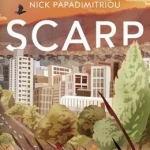
Scarp
Book
es it's difficult to define exactly what this book is: it mixes autobiography, local history,...
Sarah (7800 KP) rated Little Miss Sunshine (2006) in Movies
Mar 24, 2021
Adorably heartwarming
Film #17 on the 100 Movies Bucket List: Little Miss Sunshine
Little Miss Sunshine is a quirky gem of an indie film from 2006 that whilst a favourite of mine and Oscar nominated, has likely flown below the radar for many mainstream viewers. Which is a huge shame as this is such a fun, heartwarming and enjoyable film
Directed by husband and wife team Jonathan Dayton and Valerie Faris, Little Miss Sunshine follows the life of the dysfunctional Hoover family from New Mexico. The Hoovers are a family of unfortunates, misfits and losers, and probably one of the most realistic family depictions you’ll ever seen on screen outside of reality TV. There’s Sheryl (Toni Collette), the harassed mum who keeps her family fed on fast food. Dad Richard (Greg Kinnear) who’s trying to peddle a failing business that focuses on teaching others the secrets to success. Grandpa Edwin (Alan Arkin), an ageing hippie with a drug habit that has been kicked out of his retirement home. Sheryl’s brother Frank (Steve Carell), a gay man currently recovering from a suicide attempt after his partner left him. Son Duane (Paul Dano) who’s goal to get into flight school has led him to take a vow of silence. And finally there’s young daughter Olive (Abigail Breslin), who’s obsession with beauty pageants leads the family to take a cross country trip in an ageing VW van to help her compete in the Little Miss Sunshine pageant. Along the way, the family encounter a variety of mishaps and events that can potentially change their lives.
The Hoover family for the most part are ridiculously lovable and this is entirely down to their flaws that they are so likeable. Aside from Dad Richard who has a number of questionable ethics and morals that demean others, the family and their unique quirky personalities are the main reason why this film is so enjoyable. And the fact that the entire family are all brought together by young Olive across the span of the film makes this incredibly heartwarming. Olive is an underdog and being realistic, not the type of girl who you’d see in your typical American beauty pageant, but you still find yourself rooting for her all the same.
The cast are fantastic and while you can always rely on Toni Collette, Alan Arkin and Greg Kinnear, it’s Steve Carell and Abigail Breslin that shine brightest. Until this, I didn’t think Steve Carell could do serious and especially not a role that like. But he excels, bringing a sad, intelligent air to Frank and personally I think this is his best role to date. And then there’s Abigail Breslin, a 9 year old who steals the show and pulls the entire cast and film together. Together with a clever, well written script, the cast pull together a heartwarming and surprisingly funny film where emotions and family are key to an eventful road trip.
What I enjoyed the most about Little Miss Sunshine is that while the journey the family take is obviously most important, we do at least get the joy of seeing Olive enter the beauty pageant and this is such a fitting end to the story. There may be some slightly unbelievable or predictable events that occur across the journey (the police traffic stop being one), but ultimately you come out of this feeling incredibly satisfied and rather warm and fuzzy inside. One of the most enjoyable family road trip movies I’ve ever seen.
Little Miss Sunshine is a quirky gem of an indie film from 2006 that whilst a favourite of mine and Oscar nominated, has likely flown below the radar for many mainstream viewers. Which is a huge shame as this is such a fun, heartwarming and enjoyable film
Directed by husband and wife team Jonathan Dayton and Valerie Faris, Little Miss Sunshine follows the life of the dysfunctional Hoover family from New Mexico. The Hoovers are a family of unfortunates, misfits and losers, and probably one of the most realistic family depictions you’ll ever seen on screen outside of reality TV. There’s Sheryl (Toni Collette), the harassed mum who keeps her family fed on fast food. Dad Richard (Greg Kinnear) who’s trying to peddle a failing business that focuses on teaching others the secrets to success. Grandpa Edwin (Alan Arkin), an ageing hippie with a drug habit that has been kicked out of his retirement home. Sheryl’s brother Frank (Steve Carell), a gay man currently recovering from a suicide attempt after his partner left him. Son Duane (Paul Dano) who’s goal to get into flight school has led him to take a vow of silence. And finally there’s young daughter Olive (Abigail Breslin), who’s obsession with beauty pageants leads the family to take a cross country trip in an ageing VW van to help her compete in the Little Miss Sunshine pageant. Along the way, the family encounter a variety of mishaps and events that can potentially change their lives.
The Hoover family for the most part are ridiculously lovable and this is entirely down to their flaws that they are so likeable. Aside from Dad Richard who has a number of questionable ethics and morals that demean others, the family and their unique quirky personalities are the main reason why this film is so enjoyable. And the fact that the entire family are all brought together by young Olive across the span of the film makes this incredibly heartwarming. Olive is an underdog and being realistic, not the type of girl who you’d see in your typical American beauty pageant, but you still find yourself rooting for her all the same.
The cast are fantastic and while you can always rely on Toni Collette, Alan Arkin and Greg Kinnear, it’s Steve Carell and Abigail Breslin that shine brightest. Until this, I didn’t think Steve Carell could do serious and especially not a role that like. But he excels, bringing a sad, intelligent air to Frank and personally I think this is his best role to date. And then there’s Abigail Breslin, a 9 year old who steals the show and pulls the entire cast and film together. Together with a clever, well written script, the cast pull together a heartwarming and surprisingly funny film where emotions and family are key to an eventful road trip.
What I enjoyed the most about Little Miss Sunshine is that while the journey the family take is obviously most important, we do at least get the joy of seeing Olive enter the beauty pageant and this is such a fitting end to the story. There may be some slightly unbelievable or predictable events that occur across the journey (the police traffic stop being one), but ultimately you come out of this feeling incredibly satisfied and rather warm and fuzzy inside. One of the most enjoyable family road trip movies I’ve ever seen.
Bob Mann (459 KP) rated Minari (2020) in Movies
Apr 23, 2021
Ensemble cast acting (2 more)
Music and Cinematography
Engrossing story
A Korean Hillbilly Elegy, done right
In "Minari", a struggling Korean immigrant family - the Yi's led by Jacob (Steven Yeun) and Monica (Yeri Han) - leave California for Arkansas farmland to seek a better life. While employed sexing chicks at a factory, Jacob dreams of farming the land on which they live to improve their lives. But will his obsession for this dream stand between him and his family?
The tale is told through the eyes of young David (Alan S. Kim), who is struggling with a hole in the heart and doubts about his mortality. The arrival of Monica's mother (Yuh-Jung Youn) is resented by David, but the woman is wise (as well as foul mouthed) and perhaps the pair will eventually learn to respect one another?
Positives:
- Gloriously bucolic cinematography (by Lachlan Milne) frames an engrossing story of an immigrant family striving for the American dream. The fact that it is semi-biographical for the writer/director Lee Isaac Chung (also Oscar nominated for both) makes it all the more fascinating.
- All of the leading cast work fabulously as an ensemble. Steven Yeun and Yuh-Jung Youn have all the Oscar nomination glory (with Youn as the Grandmother odds-on to win the Supporting Actress award on Sunday). But Yeri Han is also great and the film wouldn't work unless the two child actors (Alan Kim and Noel Cho) delivered, which they do in spades.
- The music, by Emile Mosseri, is strikingly good and - deservedly - also Oscar nominated.
Negatives:
- The ending. Now, I'm all for leaving things in a thoughtful way, allowing the viewer to ponder on things. But this ending was a little too obscure for me. You need to understand (with thanks to this article) that the vegetable Minari purifies (water), grows in unfavourable soils and only really thrives in its second season. Now, forgive me for not being 'up' on my Korean plant botany, but this was too much of a leap for me. For the uninitiated (I assume 95% of the audience) the ending will feel abrupt and unsatisfying.
Summary Thoughts on "Minari":
Having watched "Hillbilly Elegy" and "Minari" on consecutive nights, I was struck by the unexpected parallels between the films (over and above the Yi's calling themselves "Hillbillies"). Both feature a dysfunctional family (though less so here). And both also feature a lead character, from an impoverished background, trying to better themselves and follow the 'American dream'. And front and centre is the growing relationship between a young boy and their grandmother.
But there the similarities end. For I just loved the simplicity of the story-telling in "Minari". No fancy flashbacks and disjointed timeline here. And a sense that you were really in on the journey of both Jacob and his farm and of the relationship between David and his Grandma.
This was heading at one point for a 10 star rating for me. But - for me anyway - the obscurity of the ending left me with a "WTF" feeling. So I've tempered my rating. Still a great film though, and recommended.
(For the full graphical review, please check out the post on One Mann's Movies on the web or Facebook. Thanks).
The tale is told through the eyes of young David (Alan S. Kim), who is struggling with a hole in the heart and doubts about his mortality. The arrival of Monica's mother (Yuh-Jung Youn) is resented by David, but the woman is wise (as well as foul mouthed) and perhaps the pair will eventually learn to respect one another?
Positives:
- Gloriously bucolic cinematography (by Lachlan Milne) frames an engrossing story of an immigrant family striving for the American dream. The fact that it is semi-biographical for the writer/director Lee Isaac Chung (also Oscar nominated for both) makes it all the more fascinating.
- All of the leading cast work fabulously as an ensemble. Steven Yeun and Yuh-Jung Youn have all the Oscar nomination glory (with Youn as the Grandmother odds-on to win the Supporting Actress award on Sunday). But Yeri Han is also great and the film wouldn't work unless the two child actors (Alan Kim and Noel Cho) delivered, which they do in spades.
- The music, by Emile Mosseri, is strikingly good and - deservedly - also Oscar nominated.
Negatives:
- The ending. Now, I'm all for leaving things in a thoughtful way, allowing the viewer to ponder on things. But this ending was a little too obscure for me. You need to understand (with thanks to this article) that the vegetable Minari purifies (water), grows in unfavourable soils and only really thrives in its second season. Now, forgive me for not being 'up' on my Korean plant botany, but this was too much of a leap for me. For the uninitiated (I assume 95% of the audience) the ending will feel abrupt and unsatisfying.
Summary Thoughts on "Minari":
Having watched "Hillbilly Elegy" and "Minari" on consecutive nights, I was struck by the unexpected parallels between the films (over and above the Yi's calling themselves "Hillbillies"). Both feature a dysfunctional family (though less so here). And both also feature a lead character, from an impoverished background, trying to better themselves and follow the 'American dream'. And front and centre is the growing relationship between a young boy and their grandmother.
But there the similarities end. For I just loved the simplicity of the story-telling in "Minari". No fancy flashbacks and disjointed timeline here. And a sense that you were really in on the journey of both Jacob and his farm and of the relationship between David and his Grandma.
This was heading at one point for a 10 star rating for me. But - for me anyway - the obscurity of the ending left me with a "WTF" feeling. So I've tempered my rating. Still a great film though, and recommended.
(For the full graphical review, please check out the post on One Mann's Movies on the web or Facebook. Thanks).
Kirk Bage (1775 KP) rated Buster's Mal Heart (2016) in Movies
Jan 22, 2021
Remember before the digital revolution and on demand TV channels when you had to stay up late and watch the films shown after midnight to see anything outside of the mainstream? Quite often they were awful, cheap, rambling experiences that maybe had one or two memorable scenes, or something so weird that you had to find out if any of your friends had seen it. Well, this is one of those films, except it was made in 2017 and I saw it in 2020 on Netflix.
I had added it to my watchlist some time during my obsession with Rami Malek and Mr Robot, knowing he had popped up in several cameo roles in big films over the years, but keen to see him take a lead role before the Oscar train of Bohemian Rhapsody and A-list fame. It is also that kind of film that arthouse cinemas would show during indie festivals or on late night double bills; stepping stones, hopefully, for all concerned to bigger things.
Writer director Sarah Adina Smith hasn’t quite made it yet, so you probably haven’t heard of her. She directed 2 episodes of Hanna, which I liked a lot, and will be talking about on The Wasteland at some point, and a few other bits of TV, but that’s about it. Judged on this oddity there is a good deal of vision and talent going on – but not yet an eye for total coherence.
Buster doesn’t know what it is, and neither do the critics, listing it as a mystery, a drama, a thriller, a sci-fi and a crime film, which… ok, yes, it has elements of all those, but isn’t really any of them, also. The titular character played by Malek is an ethereal enigma trapped in his own weird existence, and through a series of out of time and out of sequence flashbacks we come to understand his journey and descent into madness, after encountering a down at heel salesman with a big conspiracy theory to pedal, called The Inversion.
It remains shrouded in ambiguity and strangeness for most of the modest, but not off-putting, 96 minute running time, as Malek grows a beard, loses a beard and grows a beard again. Even when all is said and done, it takes a minute to put it all together and figure out what the point of it was. As something curious to let wash over you, I have to say I kinda liked it. Malek was as committed and interesting to watch as he always is, and I was just happy that films like this can still get made.
Ultimately, possibly a short film idea stretched too thin into a feature, which is an all too familiar phenomenon for new directors. But, an idea interesting and original enough to earn the right to be thought of as “showing potential”. If Smith ever does make it as big as say Jim Jarmusch or Kelly Reichardt then the arthouse geeks like me will be looking back on this with great interest. You just wonder how many people will see it at all, now the days of post midnight movies on a set channel are pretty much over?
I had added it to my watchlist some time during my obsession with Rami Malek and Mr Robot, knowing he had popped up in several cameo roles in big films over the years, but keen to see him take a lead role before the Oscar train of Bohemian Rhapsody and A-list fame. It is also that kind of film that arthouse cinemas would show during indie festivals or on late night double bills; stepping stones, hopefully, for all concerned to bigger things.
Writer director Sarah Adina Smith hasn’t quite made it yet, so you probably haven’t heard of her. She directed 2 episodes of Hanna, which I liked a lot, and will be talking about on The Wasteland at some point, and a few other bits of TV, but that’s about it. Judged on this oddity there is a good deal of vision and talent going on – but not yet an eye for total coherence.
Buster doesn’t know what it is, and neither do the critics, listing it as a mystery, a drama, a thriller, a sci-fi and a crime film, which… ok, yes, it has elements of all those, but isn’t really any of them, also. The titular character played by Malek is an ethereal enigma trapped in his own weird existence, and through a series of out of time and out of sequence flashbacks we come to understand his journey and descent into madness, after encountering a down at heel salesman with a big conspiracy theory to pedal, called The Inversion.
It remains shrouded in ambiguity and strangeness for most of the modest, but not off-putting, 96 minute running time, as Malek grows a beard, loses a beard and grows a beard again. Even when all is said and done, it takes a minute to put it all together and figure out what the point of it was. As something curious to let wash over you, I have to say I kinda liked it. Malek was as committed and interesting to watch as he always is, and I was just happy that films like this can still get made.
Ultimately, possibly a short film idea stretched too thin into a feature, which is an all too familiar phenomenon for new directors. But, an idea interesting and original enough to earn the right to be thought of as “showing potential”. If Smith ever does make it as big as say Jim Jarmusch or Kelly Reichardt then the arthouse geeks like me will be looking back on this with great interest. You just wonder how many people will see it at all, now the days of post midnight movies on a set channel are pretty much over?

645 PRO Mk III
Photo & Video
App
645 PRO Mk III has been designed, from the ground up, for professional and serious amateur...

